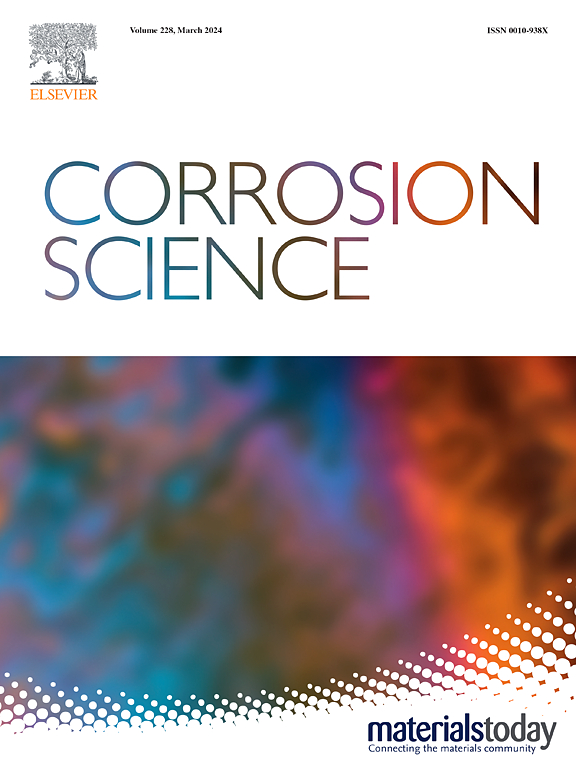Oxidation, mutual diffusion and crack behaviors of high-throughput prepared CrAl coating on Zry-4 in steam at 1200 °C
IF 7.4
1区 材料科学
Q1 MATERIALS SCIENCE, MULTIDISCIPLINARY
引用次数: 0
Abstract
The compositionally graded CrAl coating was deposited on Zry-4 substrates by high-throughput magnetron sputtering. The oxidation, mutual diffusion and crack behaviors of CrAl coating in steam at 1200 °C exhibited strongly dependence on the initial Al concentration (). As increased, the surface oxide transformed from the single-layer Cr2O3 to the bi-layer Cr2O3/α-Al2O3, and subsequently to the single-layer α-Al2O3. The transition point from the internal to the external oxidation was determined as 18.0 at% Al. The dependence of the thickness of the surface oxide layer and interdiffusion layers (IDLs) on was demonstrated. The theoretical model of interface diffusion based on the Fick’s second law was proposed. The Al reservoir was directly affected by the inward diffusion of Al rather than the oxidation process until the Al content decreased to a critical level. The cracks were caused by the stress when the α-Al2O3 formed internally, while they were a consequence of the aggregation of pores when the α-Al2O3 formed externally. Cracks and pores accumulated the ingress of O and outward diffusion of Zr, resulting in the failure of the CrAl coating
Zry-4上制备的高通量CrAl涂层在1200 °C蒸汽中的氧化、相互扩散和裂纹行为
采用高通量磁控溅射技术在Zry-4衬底上制备了复合梯度CrAl涂层。在1200 ℃蒸汽中,CrAl涂层的氧化、相互扩散和裂纹行为与初始Al浓度(NAl0)密切相关。随着NAl0的增加,表面氧化物由单层Cr2O3转变为双层Cr2O3/α-Al2O3,继而转变为单层α-Al2O3。从内部氧化到外部氧化的过渡点确定为18.0 at% Al。表面氧化层和扩散层(idl)的厚度与NAl0的关系得到了证实。提出了基于菲克第二定律的界面扩散理论模型。在铝含量降低到临界水平之前,铝储层直接受到Al向内扩散而不是氧化过程的影响。裂纹是α-Al2O3内部形成时的应力引起的,α-Al2O3外部形成时气孔聚集的结果。裂纹和气孔积聚了O的进入和Zr的向外扩散,导致了CrAl涂层的失效
本文章由计算机程序翻译,如有差异,请以英文原文为准。
求助全文
约1分钟内获得全文
求助全文
来源期刊

Corrosion Science
工程技术-材料科学:综合
CiteScore
13.60
自引率
18.10%
发文量
763
审稿时长
46 days
期刊介绍:
Corrosion occurrence and its practical control encompass a vast array of scientific knowledge. Corrosion Science endeavors to serve as the conduit for the exchange of ideas, developments, and research across all facets of this field, encompassing both metallic and non-metallic corrosion. The scope of this international journal is broad and inclusive. Published papers span from highly theoretical inquiries to essentially practical applications, covering diverse areas such as high-temperature oxidation, passivity, anodic oxidation, biochemical corrosion, stress corrosion cracking, and corrosion control mechanisms and methodologies.
This journal publishes original papers and critical reviews across the spectrum of pure and applied corrosion, material degradation, and surface science and engineering. It serves as a crucial link connecting metallurgists, materials scientists, and researchers investigating corrosion and degradation phenomena. Join us in advancing knowledge and understanding in the vital field of corrosion science.
 求助内容:
求助内容: 应助结果提醒方式:
应助结果提醒方式:


